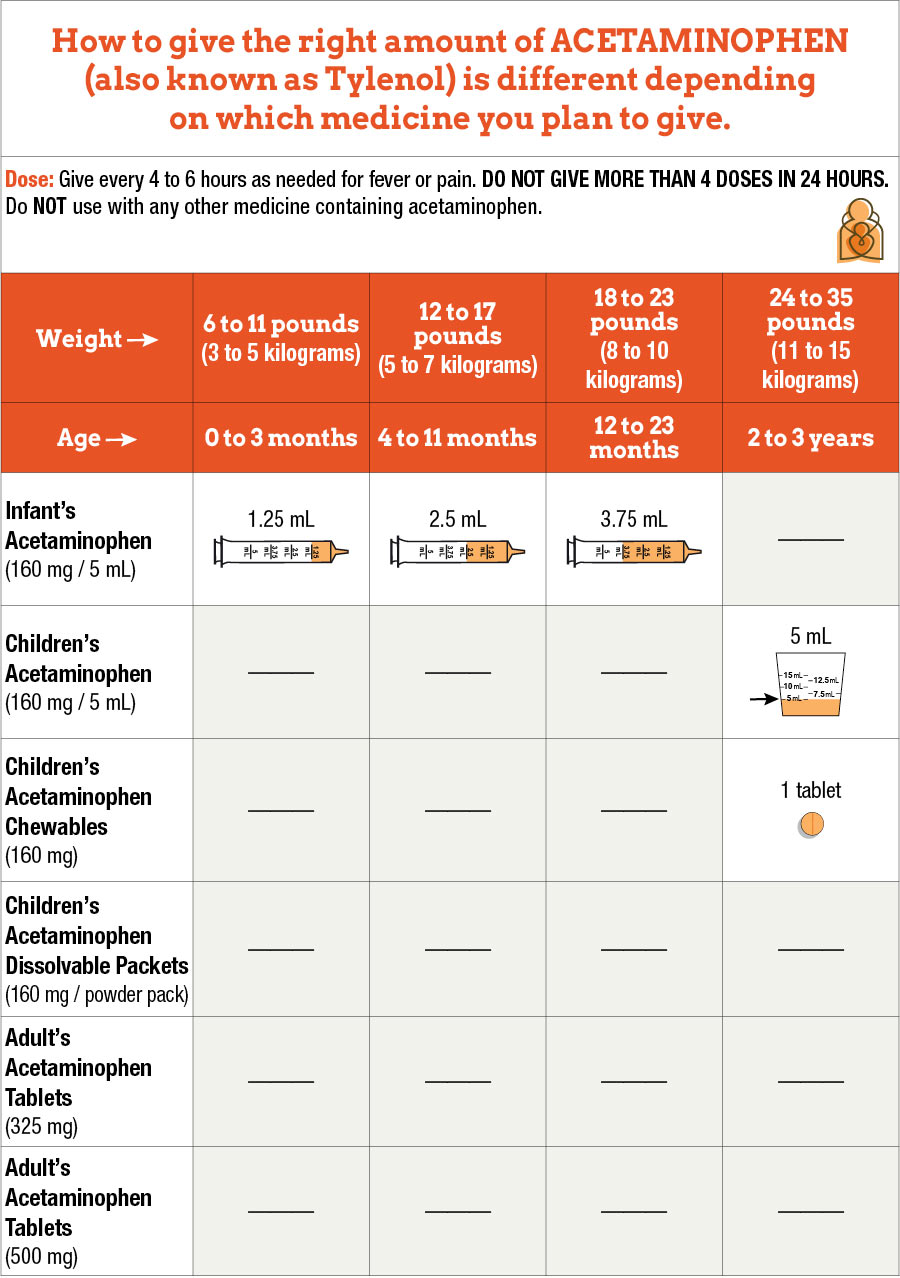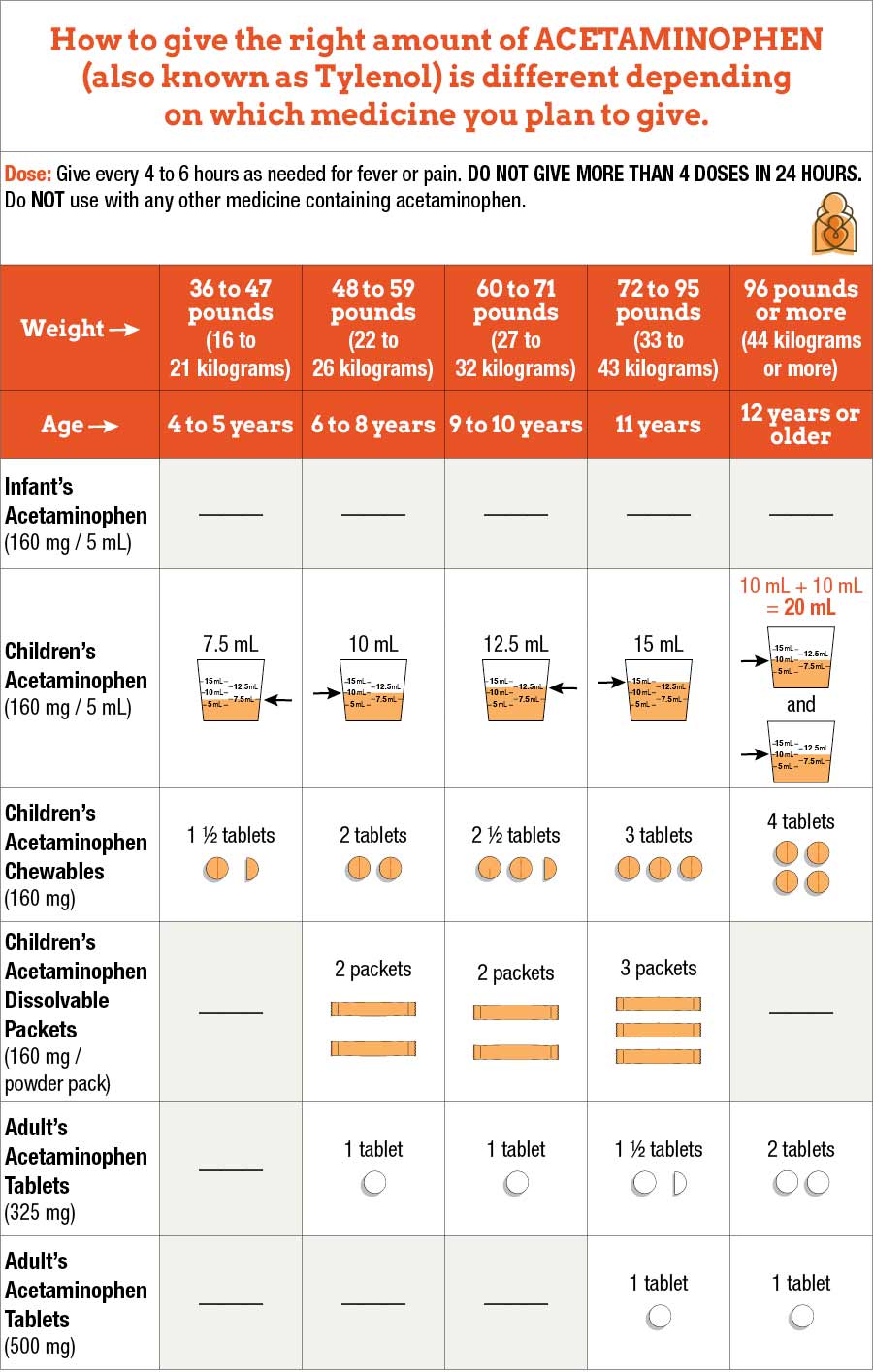Acetaminophen (also known as Tylenol®, Feverall®, Tempra®, Actamin®, and Panadol®) is a medicine used to reduce fever and pain. It is an "over-the-counter" medicine, meaning that you can get it without a doctor’s prescription.
Giving the wrong amount, or dose, of medicine is one of the biggest problems parents have when giving acetaminophen to children.
The tables* below can help you figure out the right amount to give. (Find a print-friendly version here.) Use your child’s weight to decide on the right amount to give. If you do not know your child’s weight, use your child’s age. Be sure to check with your child’s doctor to make sure you are giving the right amount.
Acetaminophen Dosage Table for Fever & Pain: Birth to 3 Years of Age:

Acetaminophen Dosage Table for Fever & Pain: Age 4 Years and Older:
 *Table notes:
*Table notes:
Caution: In 2011, the U.S. Food and Drug Administration (FDA) recommended liquid, chewable, and tablet forms of acetaminophen be made in just one strength. Since that time, manufacturers and retailers of pediatric acetaminophen have voluntarily worked to change the amount of acetaminophen in these medicines to one standard amount (160 milligrams [mg]). Some manufacturers have recently made chewable tablets into a single strength of 160 mg. Infant drops are no longer available. Liquid syrup acetaminophen is available as 160mg/5mL. Dissolvable powder packs are available for children ages 6-11 years old and 48-95 pounds. Pediatric acetaminophen products on store shelves can continue to be used as labeled.
Age of child: Do not use acetaminophen under 12 weeks of age unless your pediatrician tells you to. This is because fever in the first 12 weeks of life should be recorded in a health care setting. If there is a fever, your baby will need to be checked to see what tests are needed. (Note: Fever may happen after a vaccine in a child 8 weeks of age or older. If this happens, please talk to your child’s doctor.)
Medicines with more than 1 ingredient (also called combination products): It is best not to give medicines with more than one ingredient to children less than 6 years of age. Avoid multi-ingredient products in children under 6 years of age.
- Measuring the dose for liquid medicines (should be in "mL" or metric units): It is easier to give the right amount of liquid medicine when using a syringe than when using a kitchen teaspoon or tablespoon. Use the syringe or tool that comes with the medicine. If a tool does not come with the medicine, ask your pharmacist for one.
- How often to give the medicine (frequency): You can give acetaminophen every 4 to 6 hours as needed. Do not give more than 4 doses in 24 hours.
Oral disintegrating tablets: These are dissolvable tablets that come in 80 mg and 160 mg (junior strength)
Suppositories (medicine that is put in the rectum, or butt): Acetaminophen also comes in 80, 120, 325 and 650 mg suppositories. The amount to give each time is the same as the amount to give by mouth.
Extended-release: Do not give 650 mg oral extended-release products in children.
More information